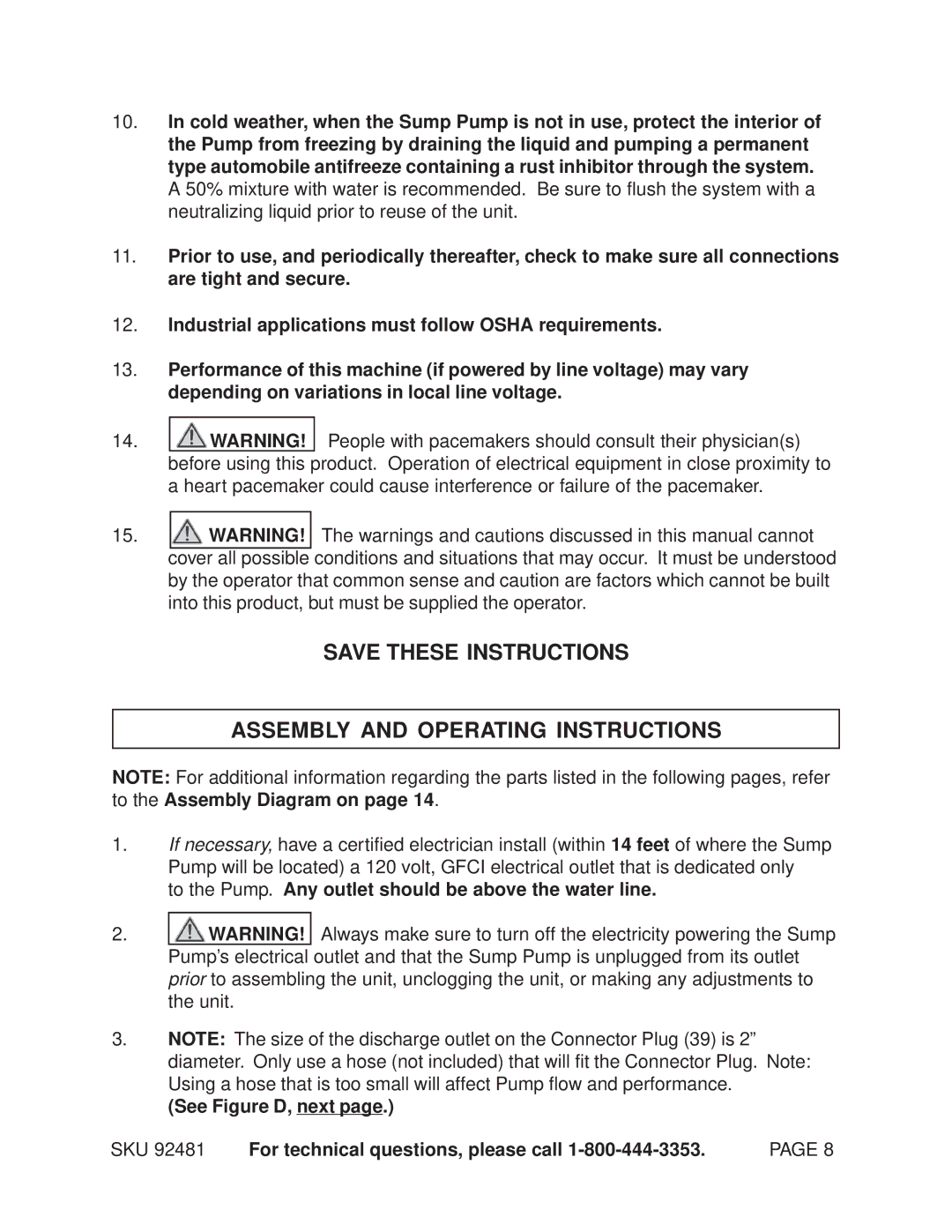
10.In cold weather, when the Sump Pump is not in use, protect the interior of the Pump from freezing by draining the liquid and pumping a permanent type automobile antifreeze containing a rust inhibitor through the system. A 50% mixture with water is recommended. Be sure to flush the system with a neutralizing liquid prior to reuse of the unit.
11.Prior to use, and periodically thereafter, check to make sure all connections are tight and secure.
12.Industrial applications must follow OSHA requirements.
13.Performance of this machine (if powered by line voltage) may vary depending on variations in local line voltage.
14.![]()
![]() WARNING! People with pacemakers should consult their physician(s) before using this product. Operation of electrical equipment in close proximity to a heart pacemaker could cause interference or failure of the pacemaker.
WARNING! People with pacemakers should consult their physician(s) before using this product. Operation of electrical equipment in close proximity to a heart pacemaker could cause interference or failure of the pacemaker.
15.![]() WARNING! The warnings and cautions discussed in this manual cannot cover all possible conditions and situations that may occur. It must be understood by the operator that common sense and caution are factors which cannot be built into this product, but must be supplied the operator.
WARNING! The warnings and cautions discussed in this manual cannot cover all possible conditions and situations that may occur. It must be understood by the operator that common sense and caution are factors which cannot be built into this product, but must be supplied the operator.
SAVE THESE INSTRUCTIONS
ASSEMBLY AND OPERATING INSTRUCTIONS
NOTE: For additional information regarding the parts listed in the following pages, refer to the Assembly Diagram on page 14.
1.If necessary, have a certified electrician install (within 14 feet of where the Sump Pump will be located) a 120 volt, GFCI electrical outlet that is dedicated only
to the Pump. Any outlet should be above the water line.
2.![]()
![]() WARNING! Always make sure to turn off the electricity powering the Sump Pump’s electrical outlet and that the Sump Pump is unplugged from its outlet prior to assembling the unit, unclogging the unit, or making any adjustments to the unit.
WARNING! Always make sure to turn off the electricity powering the Sump Pump’s electrical outlet and that the Sump Pump is unplugged from its outlet prior to assembling the unit, unclogging the unit, or making any adjustments to the unit.
3.NOTE: The size of the discharge outlet on the Connector Plug (39) is 2” diameter. Only use a hose (not included) that will fit the Connector Plug. Note: Using a hose that is too small will affect Pump flow and performance.
(See Figure D, next page.)
SKU 92481 | For technical questions, please call | PAGE 8 |
